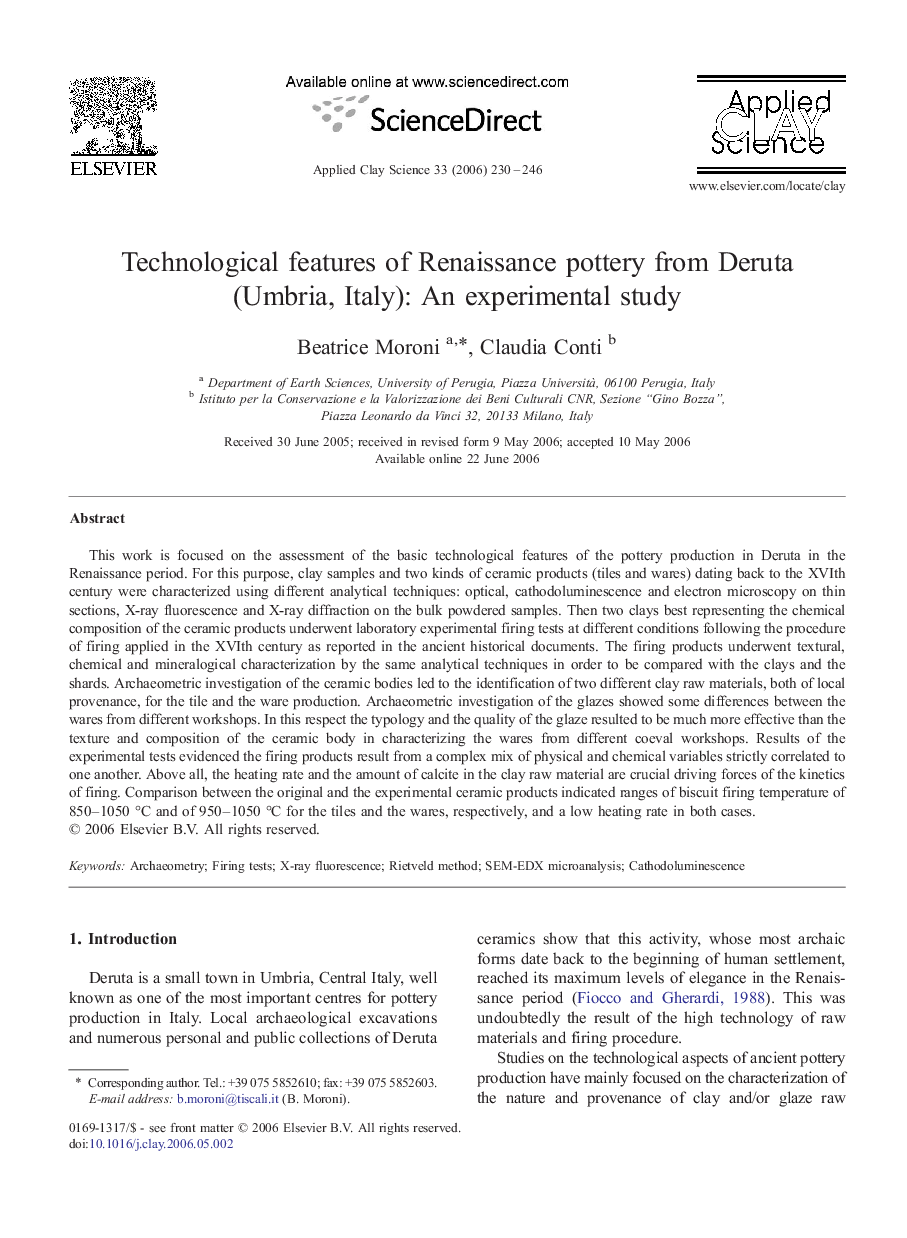| کد مقاله | کد نشریه | سال انتشار | مقاله انگلیسی | نسخه تمام متن |
|---|---|---|---|---|
| 1696524 | 1519139 | 2006 | 17 صفحه PDF | دانلود رایگان |

This work is focused on the assessment of the basic technological features of the pottery production in Deruta in the Renaissance period. For this purpose, clay samples and two kinds of ceramic products (tiles and wares) dating back to the XVIth century were characterized using different analytical techniques: optical, cathodoluminescence and electron microscopy on thin sections, X-ray fluorescence and X-ray diffraction on the bulk powdered samples. Then two clays best representing the chemical composition of the ceramic products underwent laboratory experimental firing tests at different conditions following the procedure of firing applied in the XVIth century as reported in the ancient historical documents. The firing products underwent textural, chemical and mineralogical characterization by the same analytical techniques in order to be compared with the clays and the shards. Archaeometric investigation of the ceramic bodies led to the identification of two different clay raw materials, both of local provenance, for the tile and the ware production. Archaeometric investigation of the glazes showed some differences between the wares from different workshops. In this respect the typology and the quality of the glaze resulted to be much more effective than the texture and composition of the ceramic body in characterizing the wares from different coeval workshops. Results of the experimental tests evidenced the firing products result from a complex mix of physical and chemical variables strictly correlated to one another. Above all, the heating rate and the amount of calcite in the clay raw material are crucial driving forces of the kinetics of firing. Comparison between the original and the experimental ceramic products indicated ranges of biscuit firing temperature of 850–1050 °C and of 950–1050 °C for the tiles and the wares, respectively, and a low heating rate in both cases.
Journal: Applied Clay Science - Volume 33, Issues 3–4, August 2006, Pages 230–246